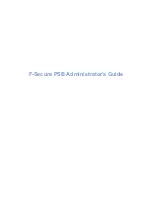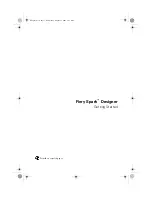
C H A P T E R 1
Introduction
Dragon NaturallySpeaking User’s Guide
2
your text, and discuss the best ways to work for maximum efficiency and
accuracy.
While this guide presents all the important features of Dragon
NaturallySpeaking
®
, it is not intended to be a complete reference to
each feature and function. More extensive information about using
Dragon NaturallySpeaking
®
is available in the program’s online Help.
This guide covers the Dragon NaturallySpeaking
®
Preferred, Essentials,
and Standard editions.
Most of the information presented in this guide is applicable to all these
editions. When information applies to certain editions only, this is noted.
Conventions used in this guide
1
This guide contains many examples of words and phrases you can say
when using Dragon NaturallySpeaking
®
. These examples appear in
italics with quotation marks, for example:
“Format That Bold.”
2
Some procedures also include sample text for you to dictate. Sample text
appears in a different typeface, with punctuation in square brackets. For
example:
US/Canada
:
When talking to a computer [comma] try to say every word
clearly without trailing off at the end of a sentence [period]
Other Dialects
:
When talking to a computer [comma] try to say every
word clearly without trailing off at the end of a sentence [full stop]
3
This guide applies to the five English dialects that ship with Dragon
NaturallySpeaking
®
:
■
US English
■
UK English
■
Australian English
■
Indian English
■
Southeast Asian English
US English uses US spelling, punctuation, and time and currency
formats. We recommend US English for Canadian users since this dialect
formats numbers (including times, telephone numbers, and currency) in
North American formats.











































